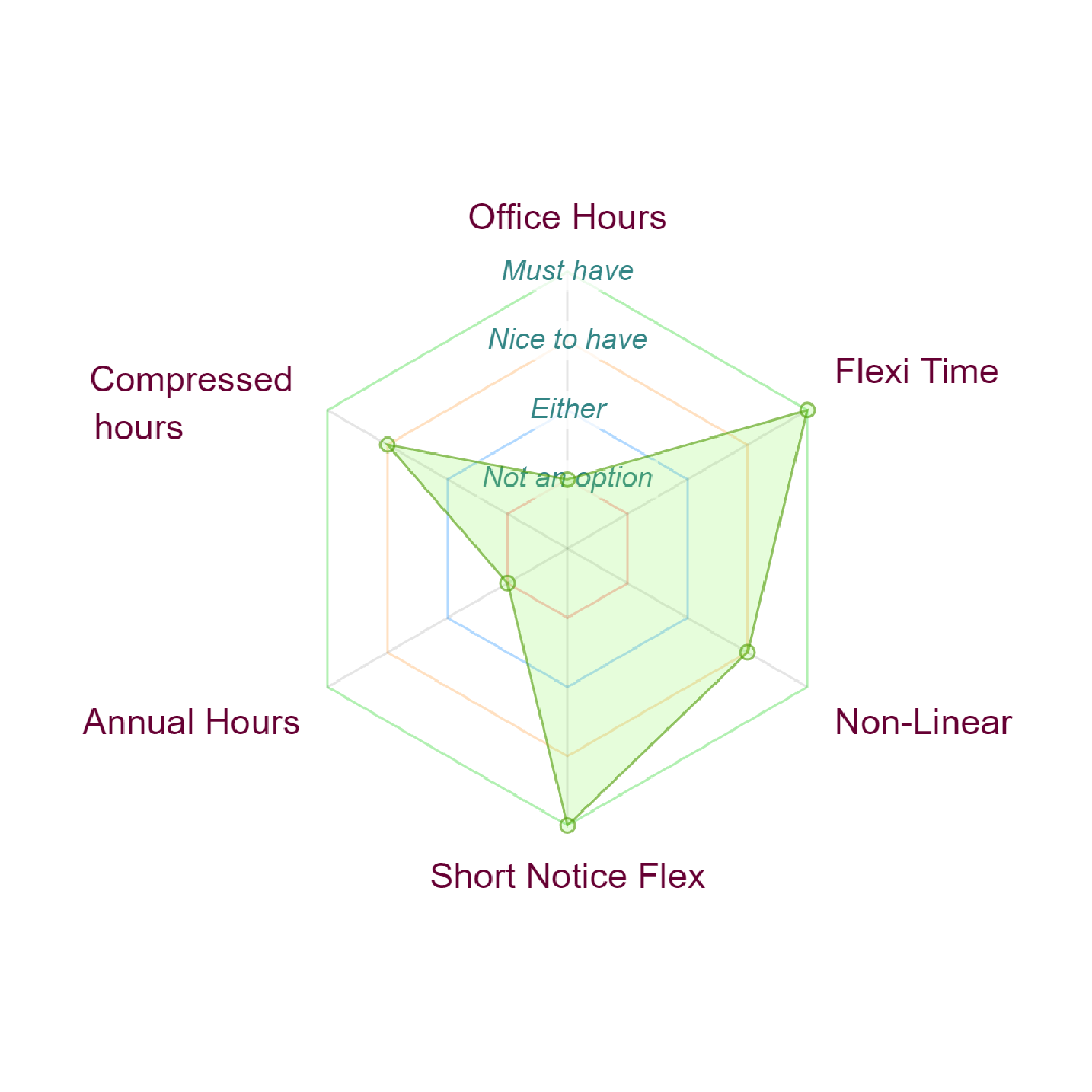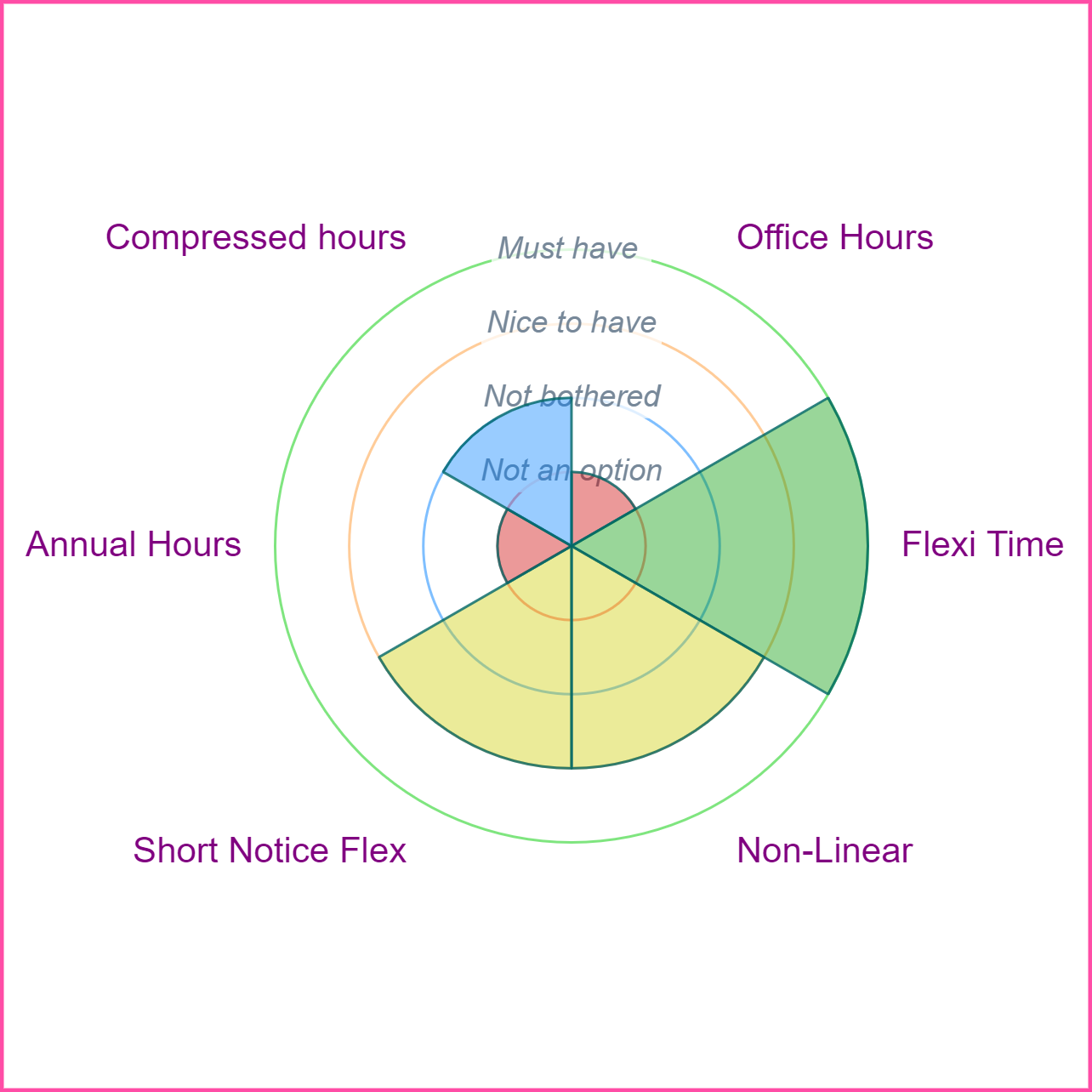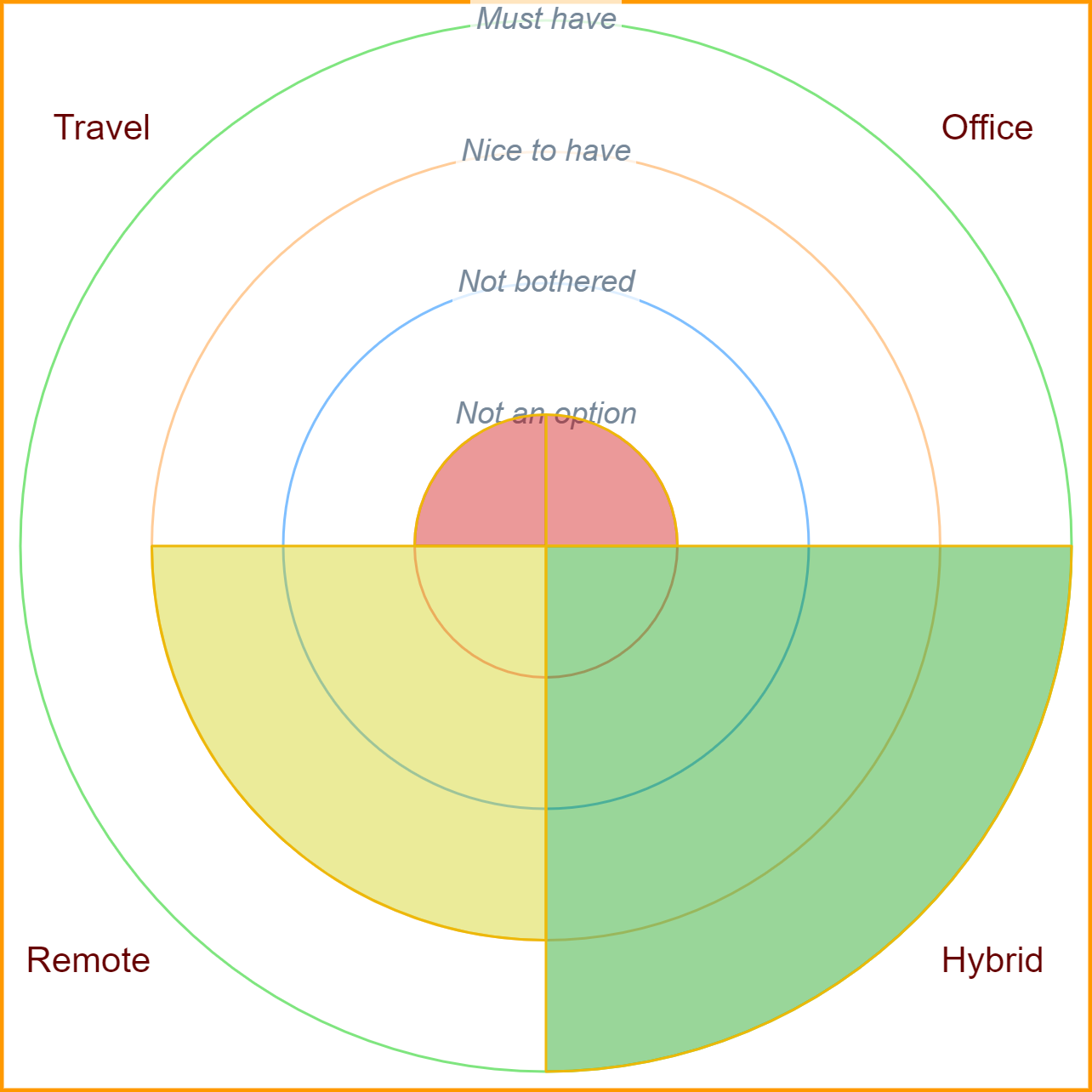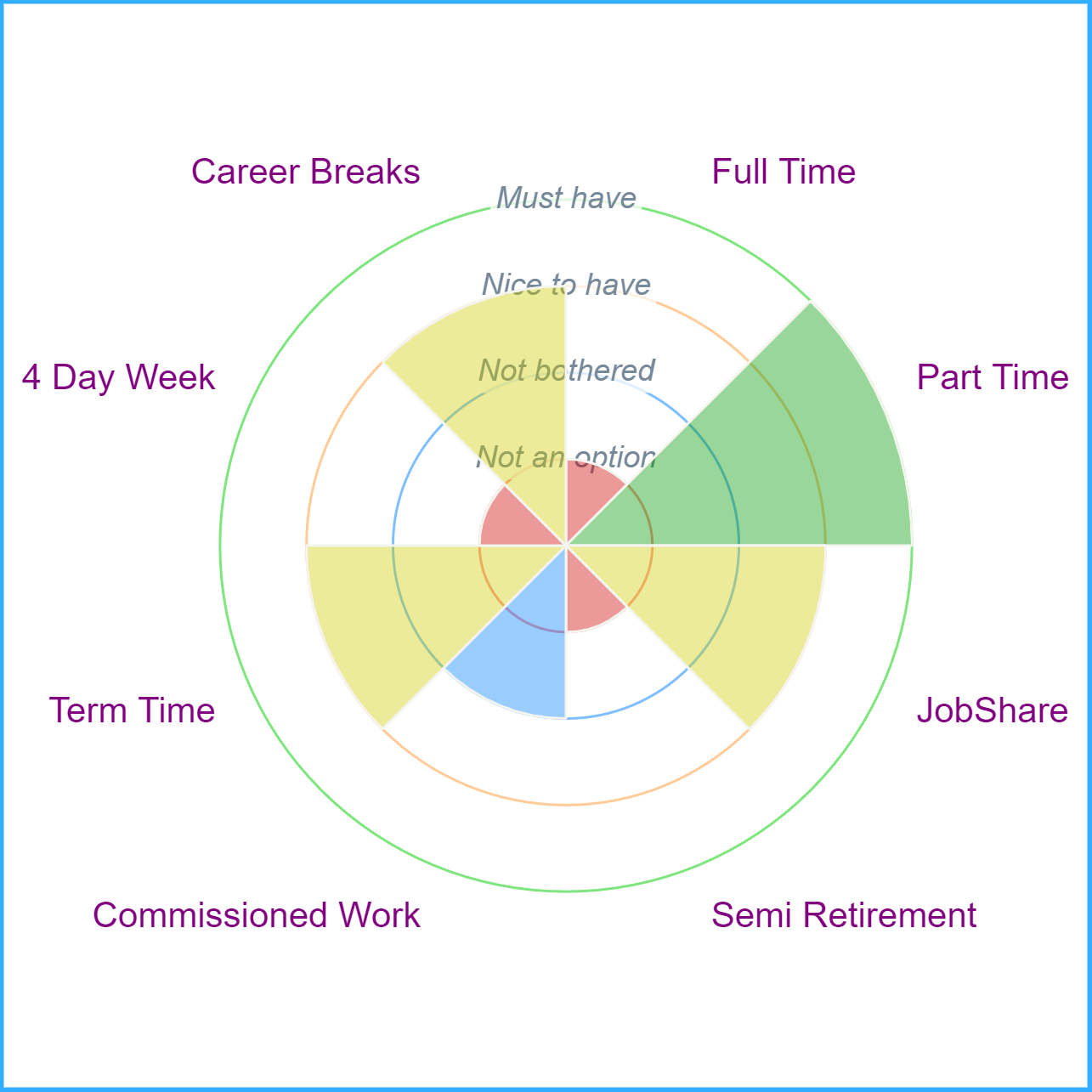Flexpertae puts you in control of your flexible working career with MapMyFlex
Companies: Map your flex - it's free
From the founders of
Flexible
Working Day




 Welcome to the Beta version of our new product - MapMyFlex!
Your feedback will help us
improve it. Please report any issues.
Welcome to the Beta version of our new product - MapMyFlex!
Your feedback will help us
improve it. Please report any issues.

Read up on 15 types of flexible working to help tailor what works best for you.
"I need a better work-life balance to juggle care-giving with work but don't know where to start, or what kinds of flexibility is available. I need more than wfh."
MapMyFlex helps you understand the 3 variables around which flexible working is based: Time, Location and Duration.
It then drills down into each type of flexible working option, allows you to compare the types of flexible working along with examples.

5 charts: 1 high level, 3 covering time, duration and location, and an all in one summary chart.
"How can I put together my unique flexible working needs and show them to my manager or recruiter without a lengthy explanation? "
With MapMyFlex you can select your preferences to build visual profiles which highlights what is a "must-have" for you and what are "nice-to-haves".
This helps you and your manager/recruiter to tailor or find a job which matches your personal flex profile.

8 things to consider to go into the conversation with confidence.
"Now I have my personal flex profile which clearly shows at a glance my preferences and needs. How do I raise flexible working with my manager or with a future employer? "
We've outlined the various steps to go through when requesting flexible working to help you be better prepared.
In addition, we've pulled together various resources you can go to for further information.

I work part-time as an Agile coach in the tech sector.
With two young children my flexible working needs include working part-time and with a remote or hybrid set up. Flexible hours is a bonus as this allows me to manage my workload around the school day.
Having this level of autonomy means I'm more efficient at my job, I can be present for key work meetings and important family time, and everyone is happy.
Time Profile


Location Profile


Duration Profile


 Workers & Job Seekers
Workers & Job Seekers
Clearly illustrates employee flexible working needs vs preferences.
Provides clarity when applying for jobs and talking to recruiters.
Allows a focal point for flexible working requests.
Can add to CV and LinkedIn profiles.
Better matching for job searches.
Adding to a workers' personnel file avoids need for repetition due to organisational changes.
 Companies & Employers
Companies & Employers
Clearly define which flexible working options are supported or negotiable.
Removes confusion from generic "support flexible working" statements.
Allows distinct flexible working profiles for different roles.
Can add to job adverts to make the process more efficient.
Better matching of candidates to vacancies.
Could be added to employees personnel file to reinforce flexible working needs and arrangements.